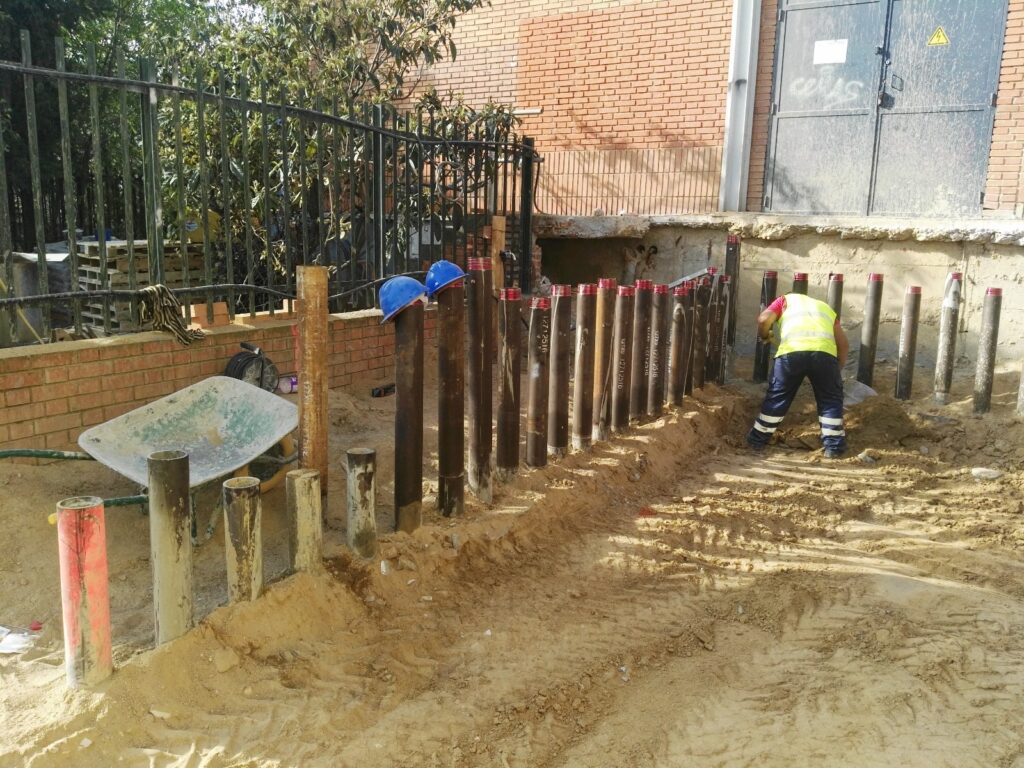Micropiles
Micropiles, versatile solutions for foundations and soil containment
At Cimentaterra, we specialize in offering high-quality solutions for your home, including the installation of micropiles.
These foundation elements, with reduced dimensions, have evolved to become a versatile and effective option in a variety of applications.
As their name suggests, micropiles are piles of smaller dimensions, usually between 150 and 220 mm. Initially, they supported little load, so a greater number of piles were placed per column, simulating the roots of a tree, hence their initial name Root Piles.


Injected drilled micropiles
This foundation and underpinning technique consists of a support system, consisting of a small diameter hole made in the ground, in which reinforcement is placed and grout, mortar or concrete is injected or poured by gravity. Drilling can be vertical or inclined.
The most widespread method is the one that uses a tubular steel reinforcement placed in a perforation, into which additive cement grout is injected.
The method of drilling the ground can be using a helical auger, rotation of the crown or rotary percussion.
Advantages and guarantees
This technique has a series of advantages and situations in which this technique can be used:

